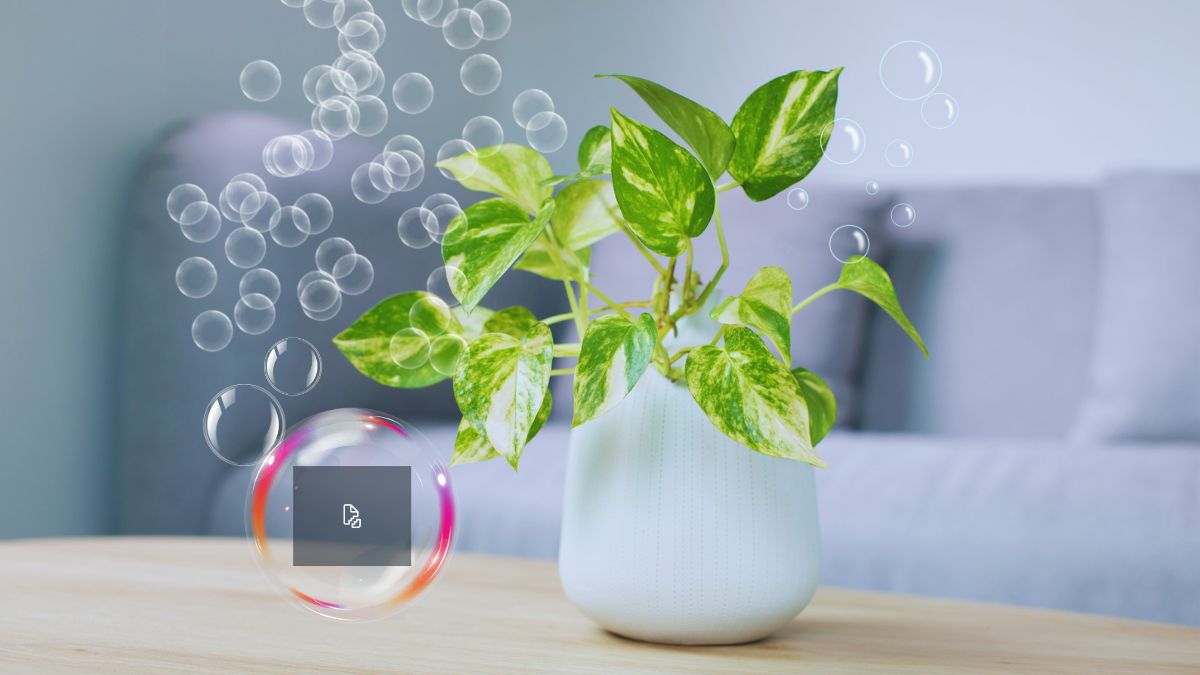Cilantro (Coriandrum sativum) is often referred to as coriander. It’s one of the basics planted in most herb gardens indoors and out. It’s relatively easy to grow. Cilantro strongly resembles parsley because it’s a member of the parsley family. Although, cilantro plants at maturity are more feathery in appearance.
Cilantro is an annual plant. This means a new crop needs to be planted after the plant matures or goes to seed.
Some individuals know it as “Chinese Parsley.” Cilantro is an herb with many nuances. The flavor is distinctive. It’s sold in freshly grown bunches, dried in powder form, or in whole seeds. It’s used in many Asian, South American, and Mexican recipes.
Growing cilantro indoors is the best way to have ready access to this herb. Cilantro has a more pungent flavor when it is fresh than when it is dried. The other advantage of this plant is the abstract design it creates as it is growing.
Cilantro, like parsley and other green leafy herbs, needs bright sunlight. Cilantro, like oregano, is delicate and more difficult to grow.
How to Grow Cilantro Indoors
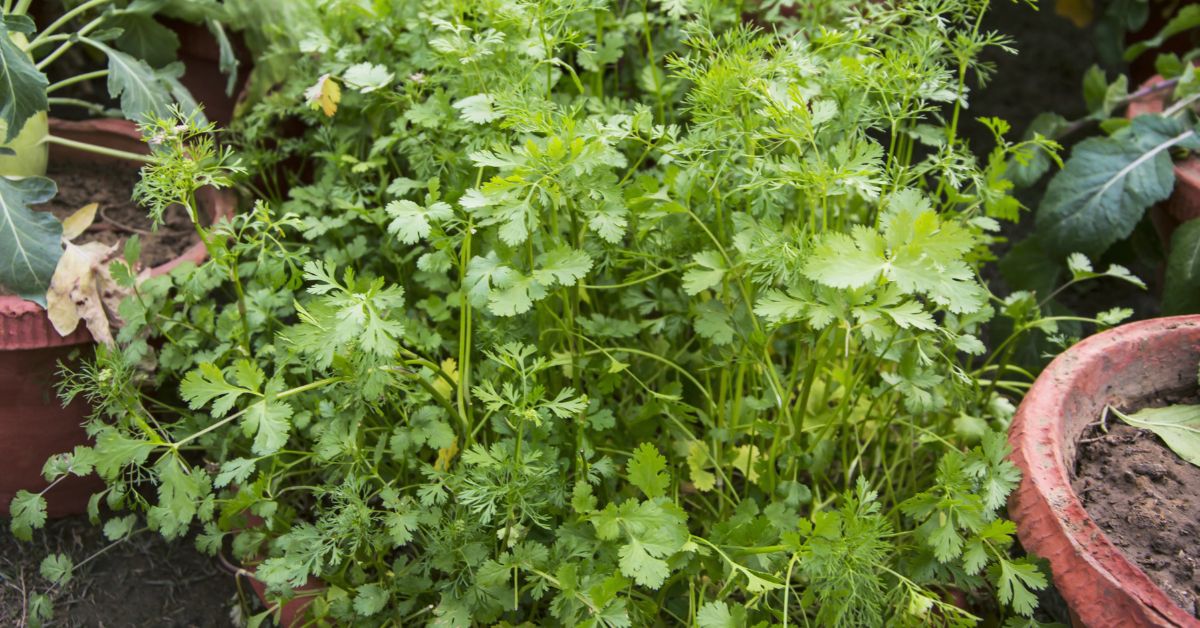
Local garden centers often sell “starter” pots of cilantro that have been germinated and allowed to take root. This is the fastest way to grow cilantro indoors. These are plants about two to three inches in height and are quite healthy.
Since cilantro is an annual, indoor gardeners plant starters for faster harvest from their plants. To grow cilantro indoors, plant it at intervals for a continuous supply. With starter plants, the time it takes to harvest is shorter.
The roots of cilantro are long and stringy. Check to see that the container has enough drainage.
Add potting soil and continue filling the container until it is approximately three-quarters full from the bottom.
Put the starting plant, with the soil it came in, in the middle of the potting soil that is in the container. Add extra potting soil until it reaches a depth of approximately one-quarter of an inch beneath the plant’s base.
Cilantro does well in clay pots or plastic containers. Choose a window or sunny area that gets full morning sun. Cilantro prefers dappled afternoon sunlight, rather than direct sunlight all day.
The soil should be kept moist. Avoid soaking the soil or the roots of the plant will rot. The room temperature should not be below 70 degrees for best-growing results.
Growing Cilantro from Seed
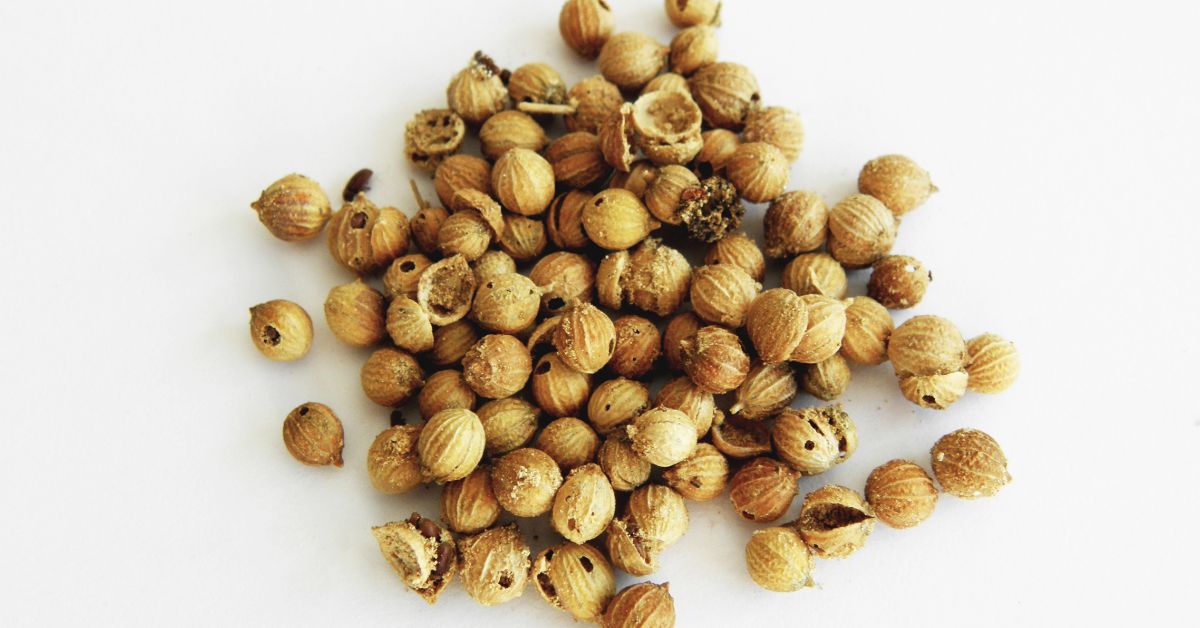
One way to gather cilantro seeds for future plantings indoors is to allow one of the existing plants to go to seed. This means that the plant will age naturally to the point where the plant produces white or pale pink blossoms. It’s important to note that cilantro goes to seed more quickly than other herbs. Seeds will drop onto the soil in the container and new plants will germinate.
After that, place them in a sandwich bag made of plastic and make sure the bag is sealed. Put the bag in an area that receives about six hours of sunlight per day for about two days, or until a little white sprout forms on the seeds. Check to see that the bag can hold its moisture. If it does not, then add some more water.
When the first sprouts show, unseal the bag and add a tiny bit of potting soil to it. When the seeds show signs of expanding and sprouting, take them out of the bag and plant them in a container that has just been filled with sterile soil. The seeds should be covered with a thin layer of potting soil, and then they should be softly sprayed with water.
Put in a bright position for at least three hours, preferably longer. Allow the plant to have another four hours of dappled sunlight.
Here is a quick tutorial on how to plant your cilantro seeds
Arranging the Indoor Cilantro Garden
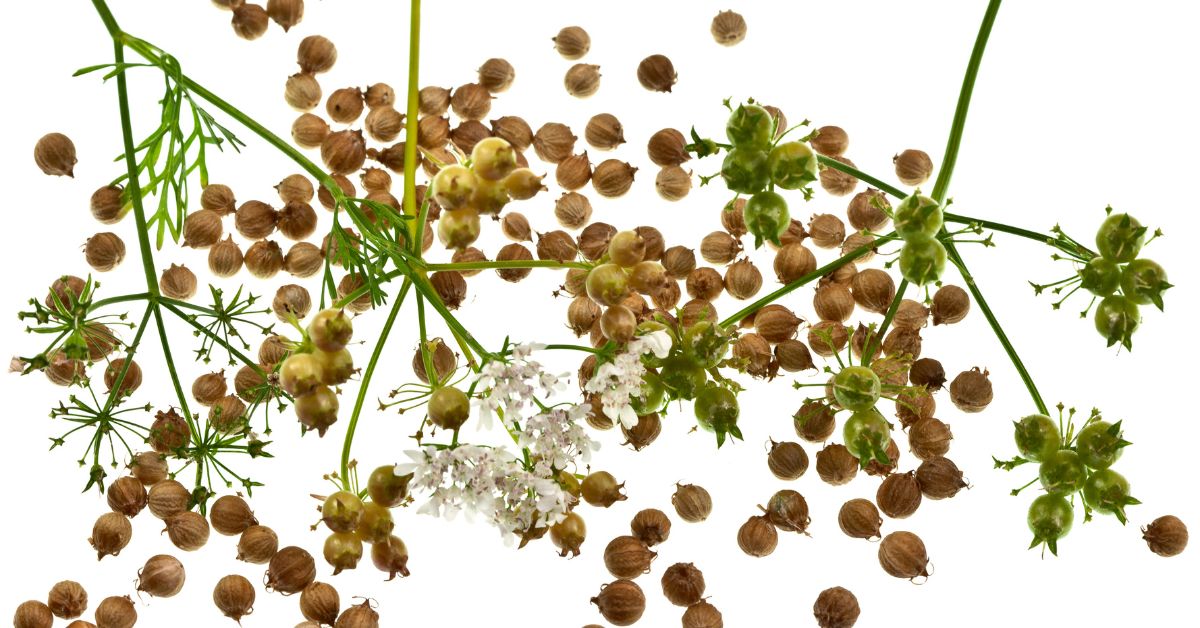
All indoor gardens need some sense of order and design. So does an indoor cilantro garden. Since cilantro plants have a wispy design as they grow, it may be a good idea to purchase plant stands to keep cilantro plants in order of their harvest time.
Plant two or more cilantro plants in each quarter of a season for the most abundant harvests.
An Indoor Fountain of Herbs
Consider planting cilantro in a large container with other types of herbs. You’ll need a fairly wide, deep container for this. Choose one that is twelve inches in height and ten inches across. Fill with potting soil three-quarter inches from the rim.
Create a circular design by planting one “row” of dill seeds around the rim of the container. Plant a row of basil seeds next and follow with a row of cilantro seeds. In the center of the container, plant chive seeds. Add a light layer of potting soil and mist with water lightly. Place in a sunny area of the room.
Each species of herbs vary in the time it takes for them to germinate. Dill germinates quickly as do basil and cilantro. Chives may take slightly longer. The result will be a lovely “bouquet” of herbs growing neatly in a single large container that provides several harvests.
Dill, basil, and cilantro are all annuals. Chives are biennials. This means that different herbs can be planted in the same design after the herbs are harvested and begin to turn to seed.
Harvest Time for Indoor Cilantro Gardens
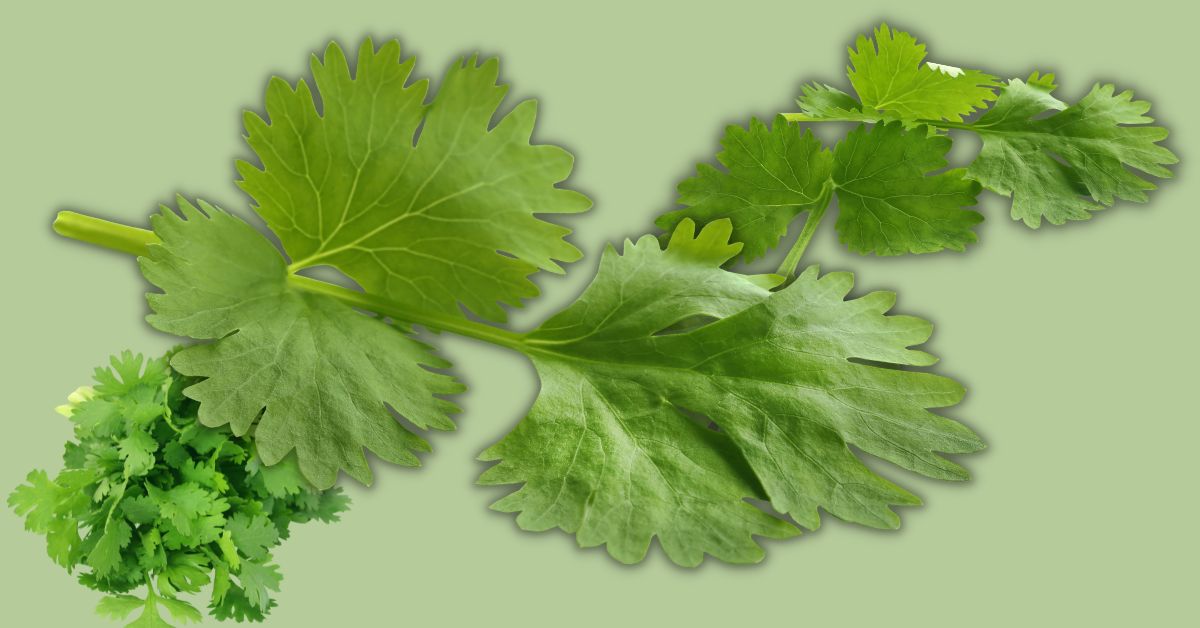
Cilantro should be harvested when the plants reach a height of at least six inches. This is when the leaves will be most tender and least bitter. Note that all of the parts of the plant are edible. However, the stems tend to be slightly more pungent than the leaves.
To harvest seeds, allow the plant to develop blooms and seed heads. There will be several seeds in each seed head in most cases. The harvested seed heads should be a brown color. The color indicates they have reached the right stage for harvesting.
Allow harvested seeds to dry before using them in recipes. Dry them in an oven at the lowest temperature for five or ten minutes. They should be dried, not roasted. You can tell when oven-dried seeds are done. They are no longer flexible and feel dense and hard to the touch. To store them, place them in a paper, not plastic, bag until they are ready to be planted.
Now here is a good video about how to grow cilantro indoors in winter:
How to Use Cilantro Seeds in Recipes
Cilantro is most flavorful when it is freshly cut. To use cilantro seeds in recipes, use a mortar and pestle to mash the seeds into a fine powder. In certain recipes, whole cilantro seeds are used to accent meats, poultry, and fish. Powdered cilantro is often used in sauces, bread, cakes, and dessert recipes. Added to a strawberry rhubarb pie filling, cilantro gives the pie filling more body.
There actually is a difference in the flavor of fresh and dried cilantro. Once cilantro has been dried, it loses its unique pungent aroma and flavor. Dried cilantro takes on a flavor similar to a blend of nutmeg and anise.
Bouquet Garni with Cilantro
Many soups and sauces require a bundle of fresh herbs to add flavor. Tie freshly snipped cilantro sprigs with basil, thyme, oregano, and sage to create a Mediterranean Bouquet Garni. Cilantro gives salads an interesting nuance. It can be eaten raw or cooked. Eaten raw, cilantro has a stronger flavor than when cooked. The hint for using fresh cilantro in recipes is to use it sparingly to avoid the flavor overwhelming other ingredients.
Important Points to Remember about Cilantro
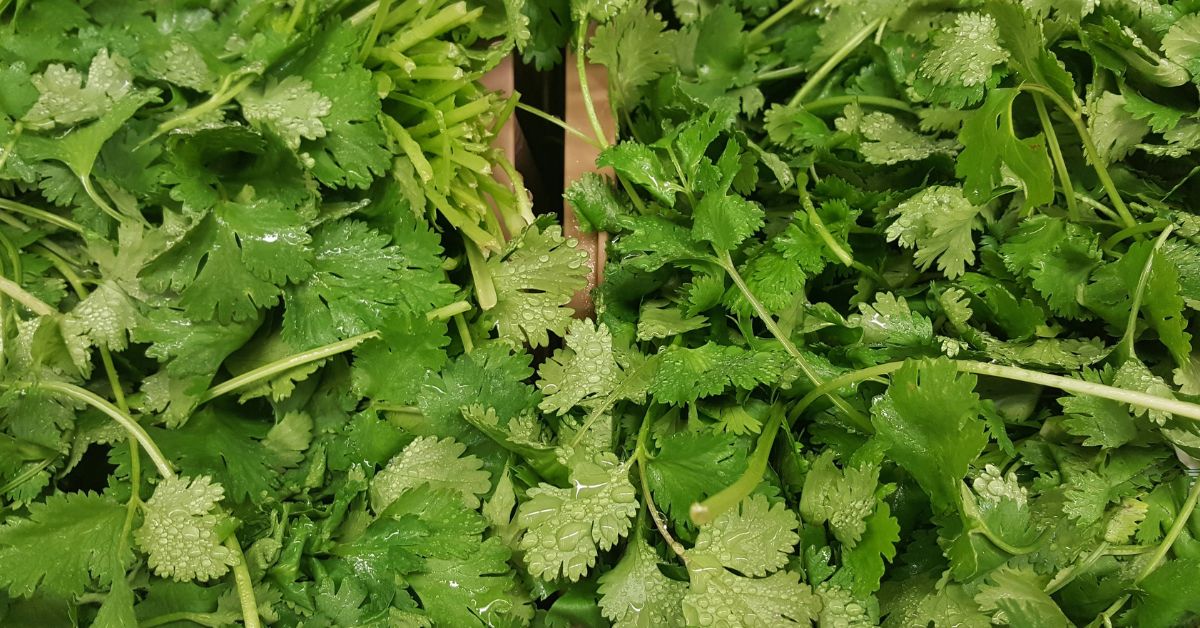
There are several points to keep in mind to growing an abundance of cilantro indoors:
- Grow from starter plants or seeds
- Provide plenty of sunlight in the morning and dappled sunlight in the afternoon
- Don’t over-water. Water when the soil feels moist to the touch
- Use rich potting soil
- Cilantro is an annual that will need to be replenished when it reaches maturity
- Plant in a deep container to allow roots to spread
- Use rich, dark potting soil
Displaying an Indoor Cilantro Garden
The pride of any indoor gardener is the display of their “green thumb.” Herbs are a wonderful addition to an indoor garden. Cilantro makes a showy display with its deep green color and delicate flowers. Consider using cilantro in an herb wreath. Cut sprigs of cilantro and add them to a living wreath with bay leaf, dill fronds, and thyme sprigs.
Cilantro grows in a symmetrical shape which adds interest to a garden display. Once it has taken root and begun to show growth, it’s as easy to maintain as most herbs. Unlike other herbs, though, cilantro doesn’t mind germinating in potting soil used for the previous planting.
Grow Cilantro and Enjoy a New Taste Sensation
Some say that cilantro is an acquired taste. Yet, many four and five-star chefs regularly require freshly grown cilantro for their recipes. Share your cilantro with friends and family when it grows in abundance. There’s always another crop of cilantro ready for planting indoors on the calendar. Plant a lot and plant often.
FAQ – Cilantro
How do you keep cilantro plants alive indoors?
Give the plants enough water till it can be seen coming out of the drainage holes. Regularly check the soil, and the only time you should water cilantro that is being grown inside is when the soil seems dry to the touch.
During the summer months, you should anticipate this happening more frequently. It is essential that the plant get full sunlight for four to five hours every day if it is to be grown inside. Cilantro.
Is cilantro hard to grow indoors?
It doesn’t matter if you grow it as full-sized plants or as microgreens; cilantro is a fantastic herb for growing inside. Plants require a minimum of six hours of full sunlight every day or additional illumination to thrive. They do well in temperatures ranging from 50 to 80 degrees Fahrenheit and in wet potting soil.
Does cilantro grow well in pots?
Yes. When given the proper attention, cilantro will thrive when grown in containers. Selecting containers that have drainage holes, which will let any excess water escape, is one of the most important stages.
Containers can be filled with coconut coir or potting soil, and the soil should be kept wet without becoming completely soaked. Your plant needs at least 6 to 8 hours of sunshine every day, and it should be kept at a temperature that ranges from 50 to 80 degrees Fahrenheit.
Can you grow cilantro indoors year-round?
Growing cilantro indoors is a fun and easy way to exercise your green thumb while enjoying the flavor and aroma of the fresh herb throughout the year.
Once you are familiar with how to care for cilantro, the process is simple and straightforward. There isn’t much room required on a sunny windowsill, and the plants thrive even without a lot of extra attention and care.
Does cilantro grow back after harvesting?
Unfortunately not. When the leaves and stems of the cilantro plant are harvested, the plant does not regrow, in contrast to the case with several other types of herbs.
Because it is not regarded to be a “cut-and-come-again” herb, after harvesting has begun, you may anticipate continuing gathering leaves from the plant for around 8 to 10 weeks before the plant dies. This is because the plant does not have the ability to regenerate after being cut.
Does cilantro regrow after cutting?
Yes. Even if you cut cilantro all the way down to the ground, it will eventually come back. However, to promote healthy growth, you should only chop off as much as you need at one time. If cilantro is cultivated in the perfect circumstances and harvested on a consistent basis, a single plant can continue to produce cilantro for a number of weeks.
Why is my cilantro plant dying?
The most typical cause of a cilantro plant going to die is drought, which can occur when there is an excess of sunlight, little irrigation, or soil that drains quickly. The leaves of cilantro can turn yellow and wilt if it receives an excessive amount of water, an excessive amount of nitrogen fertilizer, or is grown in pots that do not have drainage holes.
